-
February 9, 2016 by Total Fire and Safety
 It’s the time of year when temperatures drop and things get icy, but don’t be fooled. Fires still pose a very serious threat even in winter! Even though it’s been a milder winter than normal here in the Chicago area, it’s still important to make sure your water-based commercial sprinkler system is bullet-proof from the elements and always ready. In the Midwest, where subzero temperatures can hit at any time, it makes sense to be prepared. It’s the time of year when temperatures drop and things get icy, but don’t be fooled. Fires still pose a very serious threat even in winter! Even though it’s been a milder winter than normal here in the Chicago area, it’s still important to make sure your water-based commercial sprinkler system is bullet-proof from the elements and always ready. In the Midwest, where subzero temperatures can hit at any time, it makes sense to be prepared.
A commercial fire protection company can provide winter fire protection, but building owners need to do their part too! So how do you know you’re prepared? If you can answer these five questions affirmatively.
Are your water-based sprinkler system pipes insulated? Even indoors, if the weather gets cold enough, your sprinkler system can be compromised and a small freeze within a fire protection system will compromise the system’s efficiency. If your building has a water-based fire system, the key is to block all cold air flow to the pipes. All pipes should be properly insulated, especially those in the ceilings and exterior walls of the building. Pipes that are close to the ceiling should have insulation above them, since cold air can enter between small caps in exterior sheathing and insulation.
Have you installed a dry system in your most vulnerable areas? In places that are perpetually vulnerable to cold, such as attics and garages, it is best to replace your water-based sprinkler with a dry one. Special dry systems or dry sprinkler heads can be installed so that the sprinklers will continue to work in cold conditions, and you will never again have to worry about a freeze in a water-based system.
Has your sprinkler system been inspected lately? When it comes to your commercial sprinkler system, an ounce of prevention is key. Make sure your sprinkler system is functional before the dangerous weather hits and there is a possibility of a pipe breaking.
Do you know where your water shut-off valve is? If you have a water-based sprinkler system, there is always a chance of a pipe freezing and bursting. Know how to stop the leak and react fast in an unexpected situation.
Do you know who to call for help? Have the number of your commercial fire protection technician handy. They can prevent problems with timely inspections, repair a faulty system or update your water-based system to a dry one.
If you’ve answered yes to all questions, your water-based sprinkler system is in good hands at your facility. If you answered no, we at Total Fire & Safety are at your service to help you install or maintain the best possible system for your building. Contact one of our qualified sprinkler professionals today at Total Fire & Safety.
Category: Fire Safety, Sprinkler Systems, Total Fire and Safety, Trends Tags: frozen pipe, frozen sprinkler, pipe burst, sprinkler freeze, sprinkler system danger, winter fire safety, winter sprinkler system | Comments Off on Answer These Five Questions and Prevent Water-Based Sprinkler System Freeze!
-
December 21, 2015 by Total Fire and Safety
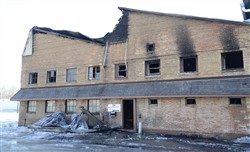 Photo from Daily Herald Business Ledger/Laura Stoecker/lstoecker@dailyherald.com Business owners everywhere know they have to keep their fire protection systems up to code, but what happens when they don’t?
In March 2014, a fire broke out in a foundry building located in Batavia, IL, caused by a careless employee. The fire happened when no one was working in the building, so no employees were hurt. However, the fire caused considerable damage to the foundry as well as the next-door business, Dewell & Dewell, which shares a wall with the foundry. Later, an investigation revealed that the reason the fire caused nearly $500K in damages was that the former tenant, Master Cast Inc., did not maintain a proper fire alarm and fire suppression system.
Now, Master Cast Inc. is being taken to court in a suit alleging the company did not have proper fire alarms and commercial sprinkler systems. The building owner is seeking $450K in damages from Master Cast Inc., and Dewell & Dewell is seeking more than $50K. The lawsuit will come to court this February.
This event is only one of the many cases every year in which a lack of properly installed fire safety equipment leads to extensive damage from fires. If your business isn’t up-to-code on all of your sprinklers, suppression systems and alarms, your business could face disastrous consequences.
This fire also addresses an issue that businesses don’t always prepare for– employee fire safety training. According to the Kane County lawsuit, the fire started when an employee used a grinder near cardboard boxes. An employee who has been trained well would have avoided the fire hazard, and possibly even fight the fire, using an extinguisher the right way.
The best way to avoid situations like this is to ensure that you have regularly scheduled fire equipment inspections. A professional service like Total Fire & Safety can keep your place of business up-to-code and inspected on a regular basis. For information on the many services available to prevent this kind of situation for your business, contact Total Fire & Safety.
Read the latest in the court investigation here:
http://dhbusinessledger.com/Content/Suburban-Trends-and-Issues/Suburban-Trends-and-Issues/Article/Lawsuit-Batavia-foundry-had-no-sprinklers-fire-caused-by-negligent-worker/87/172/17397
Category: Fire Alarm Monitoring, Fire News, Fire Safety, Sprinkler Systems, Suppression system Tags: commercial fire protection, commercial fire safety, fire and safety solutions, fire safety in the news, firesprinklerinspections | Comments Off on Foundry Fire Demonstrates Importance of Proper Commercial Fire Protection
-
December 15, 2015 by Total Fire and Safety
 Workplace safety is always important, but do you know how to safely spread holiday cheer without creating fire hazards? Here are a few crucial tips to keep in mind as you deck your workplace halls! Workplace safety is always important, but do you know how to safely spread holiday cheer without creating fire hazards? Here are a few crucial tips to keep in mind as you deck your workplace halls!
1. Decorate in areas that won’t create obstacles. The best places for decorations are locations that are out of the way, but are still frequented by employees, such as reception areas, break rooms, foyers, and lobbies. Never place decorations in exit corridors, or in places that obstruct the view of exit signs, fire alarms, extinguishers, or hose cabinets.
2. Be cautious with cords! Extension cords and string lights can pose a serious fire hazard if used incorrectly. Make sure that there are no broken or frayed wires or loose connections. If any cords appear damaged, don’t use them. Never nail or staple power cords or strings of lights, as this could seriously damage them and even cause an electric shock. Also make sure not to overload electrical outlets.
3. Choose your decorations wisely. Inspect all decorations taken out of storage, especially electronic decorations, for damage before using them. Never use decorations that have an open flame. Choose fire-retardant materials for your decoration, and make sure they do not dangle or hang in places where employees could trip over them. Under no circumstances should a decoration be hanging from a sprinkler. Make sure Christmas trees or other tall, freestanding decorations are out of the way and cannot be tipped over.
Make sure your holidays are safe and filled with cheer! If you have any questions about fire safety, equipment, or first aid in your place of business, you can contact Total Fire & Safety at 630-960-4823.
Category: Fire Safety, Sprinkler Systems, Total Fire and Safety, Uncategorized Comments Off on Deck the Halls of the Office…..Safely!
-
October 21, 2015 by Total Fire and Safety
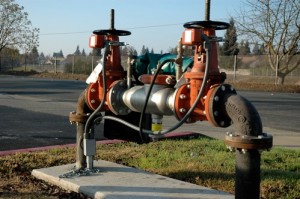 Backflow prevention systems are a must for any commercial building with large sinks, photo developing equipment, dishwashers or other machines where contaminated water is prone to backflow. Backflow prevention, sometimes known as a cross-connection control device, keeps contaminated or polluted water separate from drinking water. It is important for fire prevention systems because any water used in fighting a fire or commercial fire sprinkler systems should be potable. Backflow prevention systems are a must for any commercial building with large sinks, photo developing equipment, dishwashers or other machines where contaminated water is prone to backflow. Backflow prevention, sometimes known as a cross-connection control device, keeps contaminated or polluted water separate from drinking water. It is important for fire prevention systems because any water used in fighting a fire or commercial fire sprinkler systems should be potable.
Like any water safety system, there are also building codes that require installation of backflow prevention devices and there are specific types of backflow prevention devices that are required by code. The backflow prevention system is necessary when water is kept at high pressures to enable water flow. If the pressure fails due to an emergency (such as a broken pipe), undesirable solids, liquids, or gases may be sucked into the clean water supply.
Backflow prevention devices use an air gap, or an assembly of valves or pressure vacuums to regulate cross-connection of drinking and contaminated water systems. When drinking water and contaminated water systems meet in certain intersections of piping, the clean water must move into the contaminated water, not the other way around. If the system fails, contaminated water can backflow into clean water as the contaminated water moves to an area of lower pressure. Just as the suction of a straw directs liquid to its proper destination, so the prevention backflow system is needed to prevent cross contamination.
Since backflow prevention is an emergency system, inspection is required on a regular basis. Without regular inspection and installation, a faulty system could endanger the lives of people who drink water connected to the systems. In the past, a lack of working backflow prevention has even led to contamination of entire towns!
The installation, inspection and certification of backflow prevention systems should always be handled by professionals who are experienced with such systems. If you have questions regarding your backflow prevention system, contact Total Fire & Safety for more information.
Category: Fire Safety, Sprinkler Systems, Total Fire and Safety Tags: backflow, backflow prevention, building code, cross connection control, cross-connection, plumbing, plumbing device, plumbing questions, safety, valves | Comments Off on Why Your Backflow Prevention Device is Important
-
July 31, 2015 by Total Fire and Safety
Cloud ceiling panels are a ne w interior design trend in which a building with a high unfinished ceiling has panels at a lower level with lights attached to them. This creates a kind of ‘faux ceiling’ which draws attention away from the high ceiling. The effect can be modern, artistic, and add texture to a room, but… where do the indoor sprinkler system heads go? w interior design trend in which a building with a high unfinished ceiling has panels at a lower level with lights attached to them. This creates a kind of ‘faux ceiling’ which draws attention away from the high ceiling. The effect can be modern, artistic, and add texture to a room, but… where do the indoor sprinkler system heads go?
For a long time, commercial sprinkler systems had to be installed on both the cloud ceilings and the actual ceiling, but the NFPA has revisited these rules since the cloud ceilings have become more popular. The original thought was that the cloud panels will block water from reaching the floor of the building where the fire would be. Therefore, cloud panels would have fire sprinklers installed on them too so that the sprinklers would be closer to potential fire sources.
After running certain tests, officials have determined that there are some cloud panel situations that do not require so many sprinklers. By following certain guidelines regarding the size and distance between each cloud panel, sprinklers may only be installed in either the cloud ceiling or the true ceiling. The distance between the true ceiling and the cloud ceiling is also a factor in this rule. In order to be effective, sprinklers must cover a certain range of area in the building, vertically and horizontally. If there is enough space between each cloud panel and they aren’t too far from the ceiling itself, it is safe for sprinklers to only be installed on the ceiling. Likewise, if cloud panels are very close to the actual ceiling, sprinklers would serve better if installed on the panels themselves.
If your building has cloud ceiling panels and you have questions about where sprinklers should go, make sure to contact a professional at Total Fire and Safety, since the NFPA regulations have been updated. You can reach us at 630-324-0092.
Category: Sprinkler Systems, Total Fire and Safety, Trends Tags: ceiling panels, cloud ceiling, cloud panels, fire safety for ceilings, NFPA cloud ceilings, NFPA code, sprinkler cloud ceilings, sprinkler heads, sprinkler installation, sprinkler installation on cloud ceiling, sprinklers on cloud ceiling | Comments Off on Cloud Ceiling Panels: Where do the Sprinklers go?
-
July 9, 2015 by Total Fire and Safety
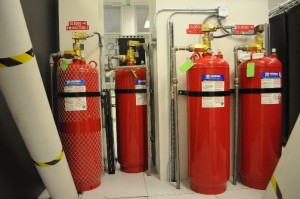 Many businesses are choosing clean agents in order to safeguard their assets- data stored on computers, expensive electronic equipment, and anything that could be destroyed with liquid, especially certain chemicals sometimes found in commercial fire suppression systems. Clean agents are a new kind of suppression system for the 21st century, because they are computer-friendly. These clean agent systems release gaseous chemicals instead of liquid, which prevents electronics from being damaged by a fire suppression system. Clean agent systems are therefore preferred in areas like data processing centers, telecommunications facilities, medical diagnostic rooms, laboratories, clean rooms, museums and art galleries, etc. Many businesses are choosing clean agents in order to safeguard their assets- data stored on computers, expensive electronic equipment, and anything that could be destroyed with liquid, especially certain chemicals sometimes found in commercial fire suppression systems. Clean agents are a new kind of suppression system for the 21st century, because they are computer-friendly. These clean agent systems release gaseous chemicals instead of liquid, which prevents electronics from being damaged by a fire suppression system. Clean agent systems are therefore preferred in areas like data processing centers, telecommunications facilities, medical diagnostic rooms, laboratories, clean rooms, museums and art galleries, etc.
Clean agents work the same way a traditional fire extinguishing agent would, by targeting the heat, oxygen supply, or the chain reaction between these components. However, clean agent suppression systems are unique because they target a third component, the availability of fuel. The gases can isolate the source of the fire’s fuel in order to extinguish it. When used properly, clean agents can be just as fast and as effective as water or other extinguishants that would affect electronic equipment.
There are certain dangers that go along with clean agents, however. Since the gas must fill an area in order to achieve its full effect, the pressure and volume of the gas must be carefully regulated. Suffocation is a possibility if people are trapped in a room when a clean agent system is activated. However, alarms are always in place to alert people in plenty of time to evacuate the area. Another potential danger occurs if the gas creates enough pressure to break walls or windows. Suppression system experts can make sure that the system is adjusted so that the pressure in a room will not reach dangerous levels.
In the case of an accidental activation of the suppression system, a traditional sprinkler system can cause thousands of dollars in property damage. Clean agent suppression systems are a way to avoid this risk while still protecting your business from fire.
If you have questions about the best type of suppression system for your needs, Total Fire & Safety is an expert in installing, inspecting and maintaining these systems. Contact us today for an appointment at 630-960-5060.
Category: Fire Safety, Sprinkler Systems, Total Fire and Safety Tags: Altenative, Clean Agent System, Clean Agents, commercial fire suppression, Eco-friendly, Extinguishants, fire suppression, green, Sprinkler System, sprinklers, suppression, Suppression System, suppression systems | Comments Off on Clean Agent Systems: The Eco-Friendly Fire Suppression Systems
-
May 19, 2015 by Total Fire and Safety
Have you heard of MIC?
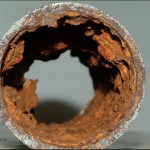
MIC is a microorganism that could be affecting your commercial fire protection, more specifically, the pipes in your sprinkler system. MIC stands for Microbiologically Influenced Corrosion, and is becoming increasingly prevalent nationwide.
There are three main causes for the rising cases of MIC in commercial fire sprinkler systems: changes in pipe materials, the way we disinfect the water, and increased maintenance activity in sprinkler systems. The MIC microorganisms do not directly cause the damage, however their biological processes produce different chemicals that accelerate corrosion, or rusting in pipes. MIC is more common in warm weather areas, but incidences have now been reported nationwide, even in in Illinois. It is estimated that North American companies spend about $1.5 billion per year on chemical treatments to combat MIC.
Early detection and preventative treatment for MIC is key to preserving your sprinkler system. So what can you do?
1. Piping should be flushed in new systems to remove oil and debris, which is potential food for microorganisms. Newer systems are designed to be flushed easily.
2. Test and drain systems as infrequently as possible, because fresh water can bring in more food for the microorganisms.
3. If your pipes are especially MIC prone, you may consider thicker wall piping.
4. Use water tests, but don’t rely on them solely to detect MIC leaks. Watch for leaks at the joints of the pipes, but keep in mind that water tests are not conclusive because microorganisms are always present in small amounts. Water tests are, however, the first step to identifying MIC as a problem in your system.
At Total Fire & Safety, we are experts in early detection as well as potential treatment options and solutions for MIC in your sprinkler system. If you would like a check for MIC, or if a water test has confirmed MIC in your sprinkler system, contact us to find the most cost effective way to treat the problem. We will provide the total solution!
Category: Sprinkler Systems Tags: commercialfiresprinkler, Firesprinkler, firesprinklerinspections, MIC, sprinkler, sprinklerinspections | Comments Off on How to Treat and Prevent MIC in Commercial Sprinkler Systems
-
May 4, 2015 by Total Fire and Safety
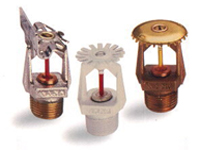 Many people question whether or not a small, concealed space on their premises actually needs a sprinkler. There is a lot of confusion about the matter, and truthfully, it is wise to always seek a professional opinion before installing. NFPA 13 Section 8.15.1.2 describes 18 requirements by which a space can be considered safe without a sprinkler, or sprinkler-exempt. However, in general, concealed spaces that are “sprinkler-exempt” should have one or more of these characteristics Many people question whether or not a small, concealed space on their premises actually needs a sprinkler. There is a lot of confusion about the matter, and truthfully, it is wise to always seek a professional opinion before installing. NFPA 13 Section 8.15.1.2 describes 18 requirements by which a space can be considered safe without a sprinkler, or sprinkler-exempt. However, in general, concealed spaces that are “sprinkler-exempt” should have one or more of these characteristics
Construction that is limited combustible or non-combustible. These types of constructions will greatly reduce the chance of ignition and spread of fire and thus may not need a sprinkler.
Unoccupiable space. If a person cannot potentially do work in the space or occupy it for a time, it may not be necessary to install a sprinkler.
Small, empty spaces or storage spaces that are not used to store combustible materials. These tight quarters are not occupied by people, and if they are not being used to store anything that would ignite or spread fire, they may not require a sprinkler.
Spaces that are inaccessible. If a space is accessible, it could allow storage of combustible materials. If not, the space may be sprinkler-exempt.
If you have a small or concealed space where you do not wish to install a sprinkler, it is best to check with a professional to make sure your decision is within code. This list covers the recurring factors that have the final say in whether a concealed space might need sprinklers installed. For more information, refer to the NFPA 13 document, the website nfpa.org, or call Total Fire & Safety. We offer sprinkler system inspection and installation and can help you determine definitively whether a small space is sprinkler-exempt according to NFPA guidelines. Contact us at 630.960.5060.
Category: Sprinkler Systems, Uncategorized Tags: closets, comercial sprinkler systems, commercial fire suppression, sprinkler systems, sprinklers in business | Comments Off on Sprinklers in Small Spaces: Do You Need One?
-
January 31, 2015 by Total Fire and Safety
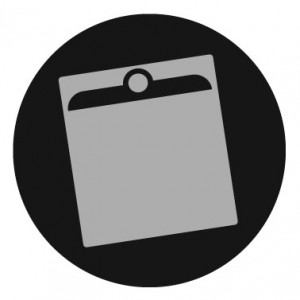 At Total Fire & Safety, most of our commercial fire protection service customers are based in the “snow belt”, which includes Illinois, Wisconsin and Indiana, where ice and sub-zero temperatures can cause troublesome pipe freezing.While most buildings take advantage of dry pipe systems, which are ideal for cold weather areas, building owners who have water-filled fire protection equipment need to take some cold weather precautions to stay safe. At Total Fire & Safety, most of our commercial fire protection service customers are based in the “snow belt”, which includes Illinois, Wisconsin and Indiana, where ice and sub-zero temperatures can cause troublesome pipe freezing.While most buildings take advantage of dry pipe systems, which are ideal for cold weather areas, building owners who have water-filled fire protection equipment need to take some cold weather precautions to stay safe.
It is the responsibility of every building owner with at-risk equipment to ensure that the building temperature remains at 40 degrees Fahrenheit or above at all times. In buildings where there are sprinkler valve rooms and pump houses with small diameter valve trim piping, a freeze can occur within a few hours after the temperature falls below 32 degrees.
However, any commercial fire protection service company can help a building owner do all they can to keep their building’s fire protection service in working order despite the cold. For example:
1. Carefully testing fire equipment for the first time after the heating system has been turned on. In areas with smoke detectors, the fire detection system should be disabled so accumulated dust on the heat strips will burn off but not set off the alarm. In the worst case scenario, if smoke detectors activate unexpectedly, various sensitive electrical/data equipment rooms protected with the gaseous fire suppression systems (FM-200, Halon, CO2, etc.), could discharge.
2. Checking that all ambient heaters and heat tracing used for the fire protection equipment are operating for the cold weather.
3. Inspecting the integrity of the piping and equipment insulation.
4. Noticing and troubleshooting where residual discharge water or condensation may have accumulated on low point drains on dry pipe and in pre-action and deluge pilot systems before opening the drain valves.
5. Checking air dryers in your dry pipe, pre-action, or deluge pilot systems.
6. Checking antifreeze solution in your antifreeze sprinkler systems. These systems are still permitted until September 30, 2022 as long as they meet all NFPA requirements.
7. Checking that drip drains on your hydrants, FDCs, valve trims and similar equipment are evacuating water from the system.
8. Installing low temperature alarms in any location that could be subject to freezing temperatures.
9. Helping you devise a plan to shorten downtime and stay safe in case the fire sprinkler system freezes.
If you’re wondering if your fire protection service is ready for the cold, Total Fire & Safety has the guidance and expertise you need to protect your property this winter.
Contact us today at 630-960-5060.
Category: Fire Safety, Sprinkler Systems, Uncategorized Tags: fire and safety equipment, fire and safety needs, Firesprinkler, firesprinklerinspections, sprinkler, sprinklerinspections | Comments Off on COLD WEATHER PRECAUTIONS FOR WATER-BASED FIRE SYSTEMS
-
December 10, 2014 by Total Fire and Safety
 Your facility’s commercial sprinkler system lies dormant until their operation is critical during a life-threatening emergency. If they fail at that certain time, lives can be lost. Regular fire sprinkler inspection can ensure peak performance when the situation heats up! Your facility’s commercial sprinkler system lies dormant until their operation is critical during a life-threatening emergency. If they fail at that certain time, lives can be lost. Regular fire sprinkler inspection can ensure peak performance when the situation heats up!
Sprinkler systems respond to heat, not smoke, and are carefully designed to activate early but only in real fire, not non-fire situations. Sprinklers release much less water than a fire department would, however by the time the fire department arrives, more water is needed to extinguish the fire.
One of our services at Total Fire & Safety is to perform regular, on-site sprinkler inspections to help our clients comply with NFPA 25. NFPA 25 is our guideline for inspection, testing, and maintenance of sprinkler systems (water-based fire protection systems) to avoid failure and ensure fast, effective response in a fire emergency.
Sprinklers are very effective; however, a recently published report by John Hall, Jr. entitled “U.S. Experience with Sprinklers” revealed that in reported structure fires from 2007-2011, sprinklers operated 91% of the time in structures large enough to activate sprinklers. Their effectiveness rate was 96%, which is good, but not perfect. Why would a sprinkler system fail in an emergency?
The National Fire Prevention Research Foundation (NFRP) prepared a report that they recently presented at a workshop in Chicago. Their findings on the major reasons for sprinkler system failure were:
64% Shutoff of the system before fire began. This may occur in the course of routine inspection or maintenance and is easy to monitor for safety.
17% Lack of maintenance. If a sprinkler system is not maintained, chances are it will not operate correctly in an emergency.
6% Manual intervention that defeated the system. Sometimes we are to blame for turning off or damaging the system during its deployment.
6% Inappropriate system for the type of fire. A competent fire protection company like Total Fire & Safety can help you determine the right sprinkler system for the job, whether it be wet pipe or dry pipe systems.
7% Component damage. Proper inspection and maintenance can ensure that the fire protection equipment is in proper working order.
As you can see, your sprinkler system must be well maintained and ready to deploy at all times in case of a fire. When is the last time you had your sprinkler system inspected? Call Total Fire & Safety today to see if maintenance or an upgrade is needed at 630-960-5060.
Category: Fire Alarm Monitoring, Sprinkler Systems, Uncategorized Tags: fire and safety equipment, Firesprinkler, firesprinklerinspections, lifesafety, sprinkler, sprinklerinspections | Comments Off on Commercial Sprinkler Systems: Why Fire Sprinkler Inspection is Important
|
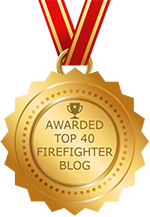
|
|
|
|
|
|
 It’s the time of year when temperatures drop and things get icy, but don’t be fooled. Fires still pose a very serious threat even in winter! Even though it’s been a milder winter than normal here in the Chicago area, it’s still important to make sure your water-based commercial sprinkler system is bullet-proof from the elements and always ready. In the Midwest, where subzero temperatures can hit at any time, it makes sense to be prepared.
It’s the time of year when temperatures drop and things get icy, but don’t be fooled. Fires still pose a very serious threat even in winter! Even though it’s been a milder winter than normal here in the Chicago area, it’s still important to make sure your water-based commercial sprinkler system is bullet-proof from the elements and always ready. In the Midwest, where subzero temperatures can hit at any time, it makes sense to be prepared. Facebook
Facebook
 Instagram
Instagram
 LinkedIn
LinkedIn








